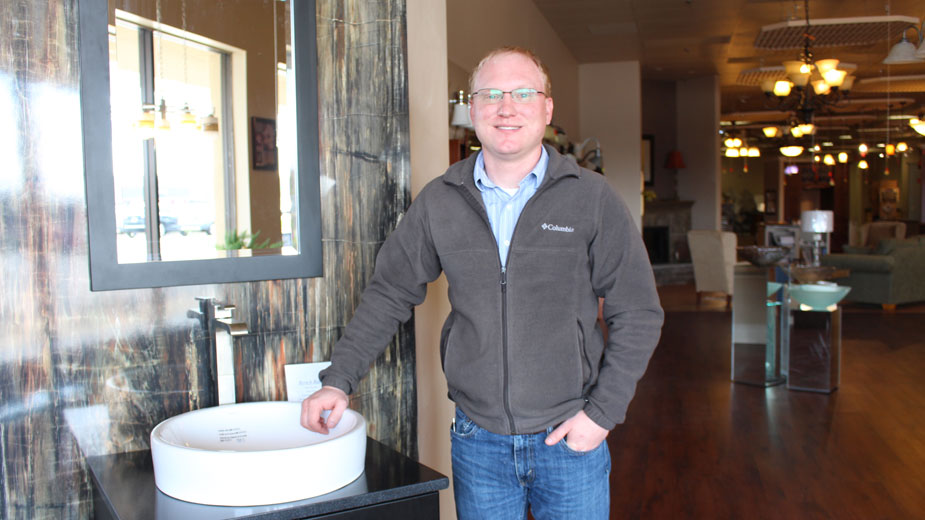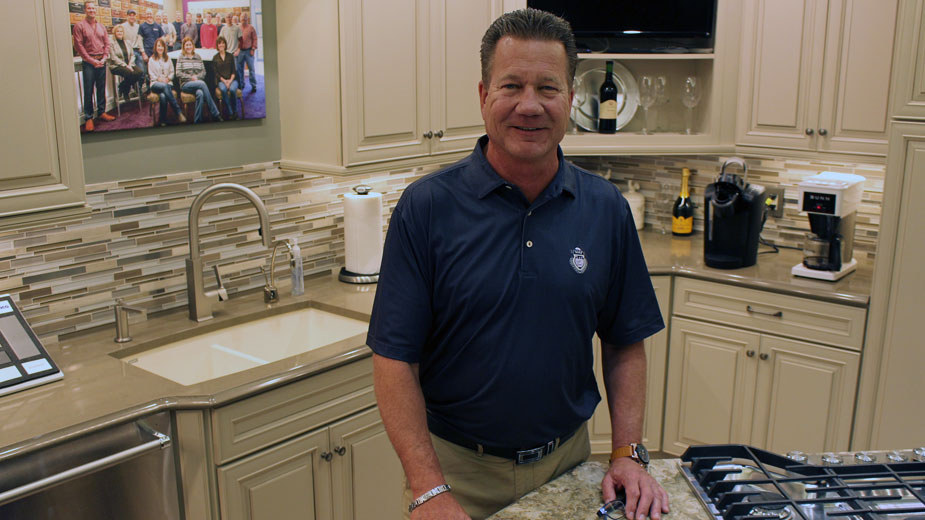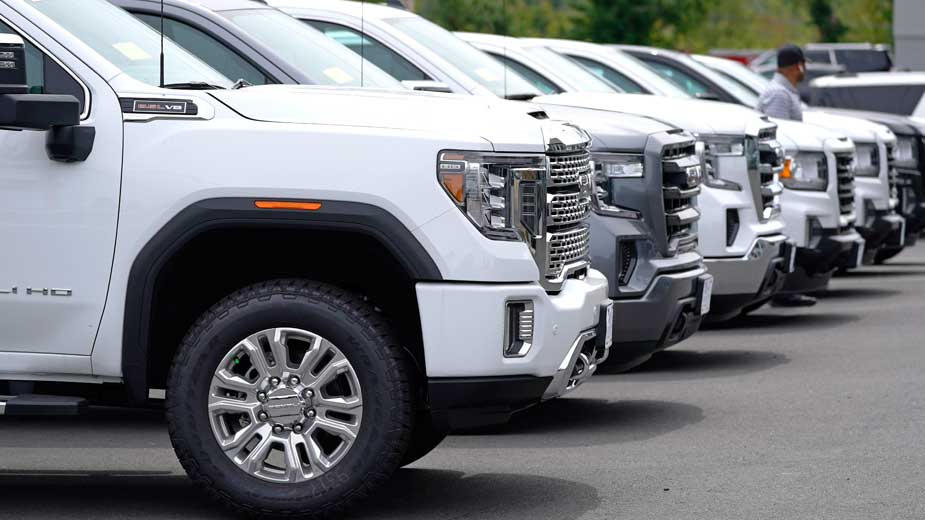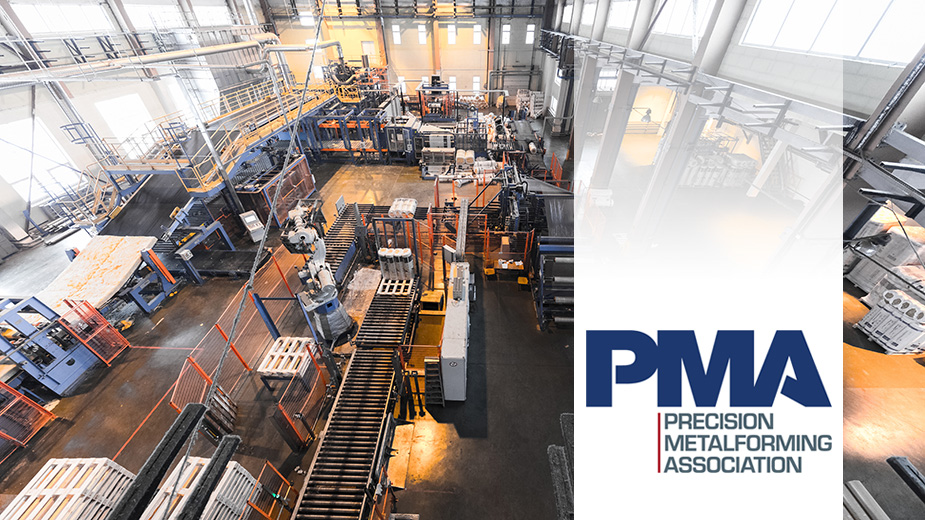Not Your Grandparents’ Kitchen and Bath
YOUNGSTOWN, Ohio – Trends in kitchen and baths come and go. Stained cabinets give way to painted ones. Quartz replaces laminate countertops.
But the trend having the biggest impact on the industry, says Ed Metzel, is the thought process of buyers.
“Now they want it now,” says Metzel, general manager of the Design Center for GreenHeart Companies in Boardman.
Until recently, it was common for a couple to purchase a house and keep the kitchen as it was for upward of 20 years, he says. Only after the kids had moved out would they consider redoing the kitchen.
“Now somebody moves in and wants to change the kitchen immediately,” says Metzel.
“And in seven years they’ll do it all over again,” agrees Joe Harvey, who manages GreenHeart’s flooring division.
Not only are homeowners updating their kitchen and baths sooner than before, they’re also doing it more frequently, says Chris Bryson, the fourth-generation owner of Rusco Design Center in Boardman.
“I have customers that want what they want right now,” he says. “And if it’s a matter of them changing it in 10 years, they’ll do it.”

At Duncan’s Kitchen and Bath Center in Poland, second-generation owner Tom Duncan says even customers who live in condos and newer homes are remodeling sooner.
“We’re in a house that’s seven years old and they’re totally gutting the kitchen,” he says.
Consumer demand for up-to-date, trendy kitchens and baths is why the industry reached a value of $158 billion in 2017, up 7.3% from the year before.
In its Size of Market Study and Outlook report, the National Kitchen and Bath Association says the residential kitchen and bath market now represents a quarter of the entire new-construction industry.
Home Advisor reports the average kitchen remodel in 2019 cost $23,406, or $150 per square foot, while the average bathroom remodel cost consumers $10,313.
“They can have $70,000 worth of cabinetry in a house,” says Metzel, who has been working in the industry since 1985.
“We never had to worry about a $7,000 bill for quartz countertops for a house,” until recently, he continues.
Today, most countertops sold at Rusco Design are made of quartz, a material whose price is only going up, Bryson says.
Several of the companies who import the most affordable brands of quartz have been impacted by the Trump administration’s tariffs, which has made several domestic brands that were traditionally more expensive competitive once again.
The increase in the price of quartz is also driving an increase in demand for granite countertops.
“The options today are gigundous,” says John Angelilli, chief financial officer of Greenhart.
For years, the only information a builder needed from the customer regarding his cabinets was, “What color oak do you want?” says Metzel.
Today, maple is the wood of choice for most consumers. Instead of stain, they’re opting for cabinets painted a solid color, usually white or gray.
Bryson foresees gray as a color palette “sticking around for a while,” though greens and blues are starting to gain in popularity.
“Navy blue is supposed to be the trending color,” he says.
Keeping up with color and material trends is something every design center does. What’s new is the rapid change in technology, although the upsides are significant.
At Rusco, Bryson keeps a copy of his father’s old sketchbook, which used to be the only way to give a customer a visual representation of the plan. Today, design work is done with a computer program.
At Duncan’s, they’re selling more items with built in technology such as Wi-Fi, which Duncan says essentially turns a regular product into a luxury item.
“We’ve got a medicine cabinet that has Wi-Fi. It’ll play music for you,” he says.
Another hot item is a Wi-Fi-equipped showerhead, which allows consumers to turn on and adjust the temperature of their shower on their way home so it’s ready as soon as they arrive.
On their way to the shower, consumers can place their phone on the countertop, where it will immediately start charging, with no need for wires or plugs.
But the hottest item right now, Duncan says, is heated floors. They’re popular not just in bathrooms, but for kitchens as well.

“A lot of people are cooking in their bare feet and they want that area warm,” he says. While heated floors in the kitchen are less common, he says he installs them in nearly every bathroom he does.
As far as the traditional items builders are installing in the bathrooms, it’s almost the exact opposite from 10 years ago, with whirlpool baths being replaced by large walk-in showers with multiple showerheads and recessed nooks for sitting.
“No one is doing the big tubs anymore,” says Jessica Varcholik, an interior designer with GreenHeart.
But for consumers with enough space, freestanding soaking tubs are the must-have item, Bryson says.
“They’ll take out a bathtub in one area, put in a shower, then in the middle of the bathroom they’ll have the free-standing tub,” he says.
Another item that is falling by the wayside is the dining room table. As more consumers turn to open-concept floor plans, the dining room is disappearing. In its place are large, open areas with the kitchen island as the focal point.
The general rule for islands is the bigger the better. Most popular are those that seat at least six people comfortably.
“I did a house a year ago where the island cost more than I paid for my house,” Bryson recalls.
Pictured:Homeowners want kitchen islands and they don’t want to wait to start projects, say Jessica Varcholik, Joe Harvey and Ed Metzel of GreenHeart Companies.
Copyright 2024 The Business Journal, Youngstown, Ohio.



